St Paul's Cathedral |
|
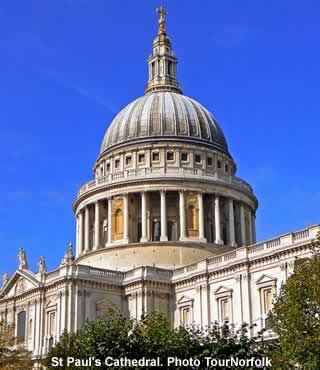 |
|||
Considered to be the world’s first Protestant Cathedral with one of the largest domes in the world |
|||||||||
Listen to this article |
|||||||||
|
|||||||||
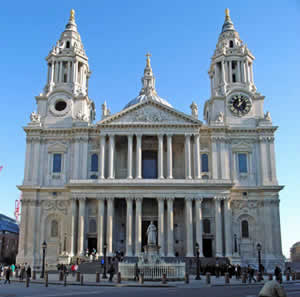 Main West Entrance Photo Steve Cadman |
|||||||||
St Paul's Cathedral, considered to be the world’s first Protestant Cathedral, stands on the original site of a Roman temple to Diana. The St Paul’s that you see today was built after Sir Christopher Wren was commissioned to design a replacement for Old St Paul’s, which was destroyed in the great fire of London in 1666. His first two designs were turned down before finally his third design was accepted, and work begun in 1675. The first service was held in 1697 but it was a further 13 years before work was completed in 1710. |
|||||||||
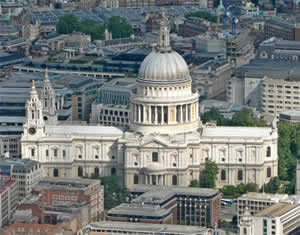 An aerial view of St Paul's Cathedral Photo Mark Fosh |
|||||||||
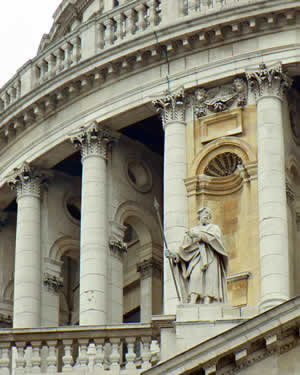 A close-up view of the detail around the dome Photo TourNorfolk |
|||||||||
|
|||||||||
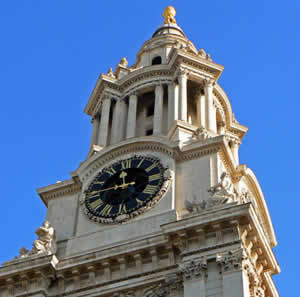 The Clock Tower Photo TourNorfolk |
|||||||||
St. Paul's was a great inspiration during the Second World War; when much of the surrounding area was destroyed during the Blitz, pictures were shown of St. Paul's standing steadfast. A bomb did actually hit the Cathedral on the west side, although it did not explode. It demolished the High Alter and damaged the Crypt as well as many of the stained glass windows. These were later replaced with clear glass windows, as was Sir Christopher Wren’s original intention, and the High Alter you see today is a Victorian replacement for the one that was destroyed. When the bomb was exploded safely off-site, a 100 ft crater was left in its place. |
|||||||||
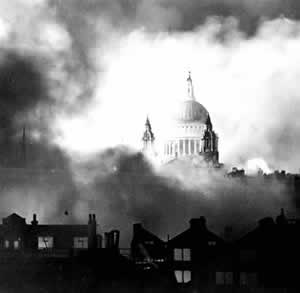 Standing up gloriously out of the flames and smoke of surrounding buildings, St. Paul's Cathedral is pictured during the great fire raid of Sunday December 29th 1940 Photo Herbert Mason 1940 |
|||||||||
The interior of St. Paul's, like the exterior, is dominated by its great dome, one of the largest Cathedral domes in the world at just over 111 meters high. |
|||||||||
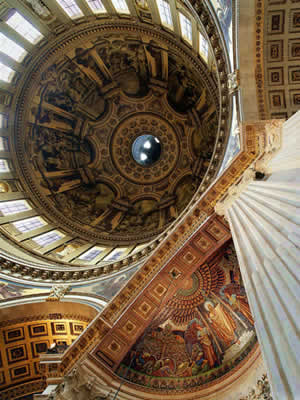 Looking up into the dome Photo St Pauls Cathedral |
|||||||||
Around the Dome there are 3 Galleries, the most famous of which is the Whispering Gallery. It runs around the interior, and is 259 steps from ground level. The acoustics in this part of the Cathedral make words whispered to the wall audible 100 feet away on the opposite side. The Stone Gallery is 378 steps from ground level, on the exterior of the Dome. From here you have a wonderful view of London. The most superb views however, are from the Golden Gallery, which is 530 steps from ground level, the highest point of the outer dome. |
|||||||||
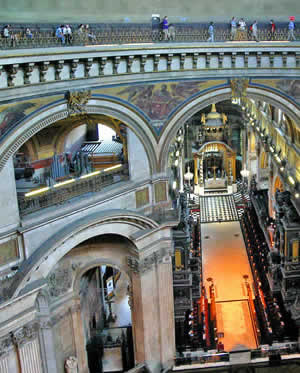 The Whispering Gallery Photo St Pauls Cathedral |
|||||||||
Inside St Paul’s are memorials to war heroes and artists, stunning choir stalls and beautiful carved marble. Among the many notable pieces are memorials to Admiral Nelson and the Duke of Wellington. The South Quire Isle contains a marble effigy of John Donne who died in 1631, a Dean of Old St. Paul's and one of Britain's finest Poets. This is one of the few effigies to have survived the great fire in 1666, only because it fell down into the Crypt as the fire raged. Today you can still see scorch marks on the base of the statue. |
|||||||||
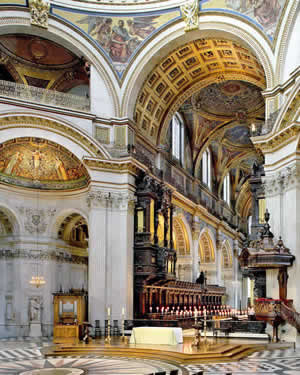 Inside St Pauls Cathedral Photo St Pauls Cathedral |
|||||||||
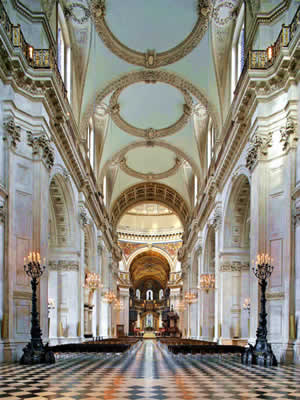 The Nave Photo St Pauls Cathedral |
|||||||||
|
|||||||||
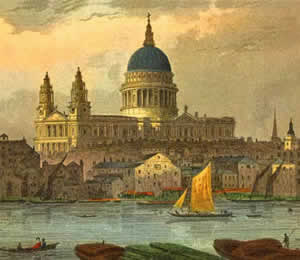 St Pauls in the early 19th century by Thomas Hosmer Shepherd Source WikiMedia (PD) |
|||||||||
The Crypt of St Paul’s is thought to be the largest in Europe, containing around 200 memorials, including the tomb of Sir Alexander Fleming who discovered penicillin, among many other great British figures. There is also an ‘Artist’s Corner’, with memorials to some of the most accomplished artists and composers of past times. |
|||||||||
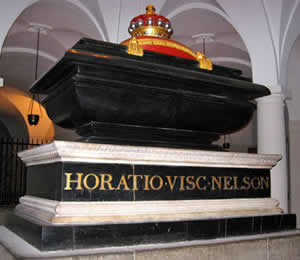 Tomb of Horatio Nelson in the Crypt Photo St Pauls Cathedral |
|||||||||
Surrounded by tombs and memorials to his family, is the simple marble slab marking the resting place of Sir Christopher Wren. Above is the inscription chosen by his son lector, si monumentum requiris, circumspice, meaning reader if you seek his monument, look around. |
|||||||||
|
|||||||||
St Paul's Cathedral is open to visitors Monday to Saturday from 8.30am to 4pm (times may vary). Entry costs around £12 for adults, £5 child. Guided tours also take place during the day (additional charge and limited places available). Tel: 020 7246 8357 |
|||||||||
|
Pocket Britain is optimised for use on a smartphone or tablet with internet access. All content is subject to copyright. All reasonable methods have been used to ensure information supplied is accurate at the time of publication. However, it is advisable to check information before relying on it. Privacy Policy |